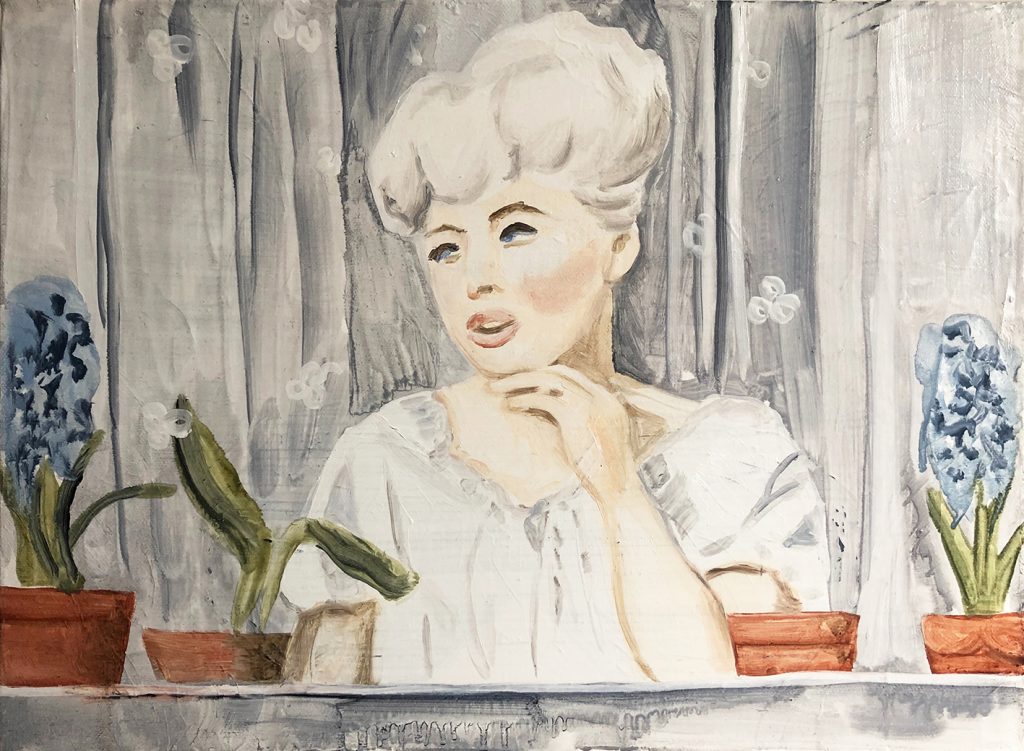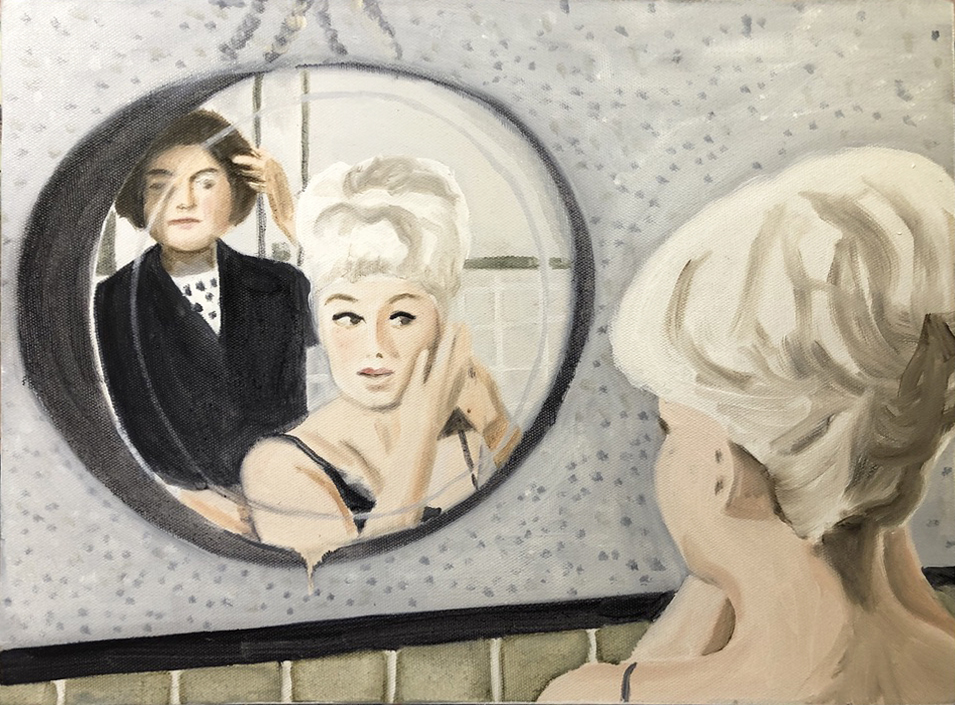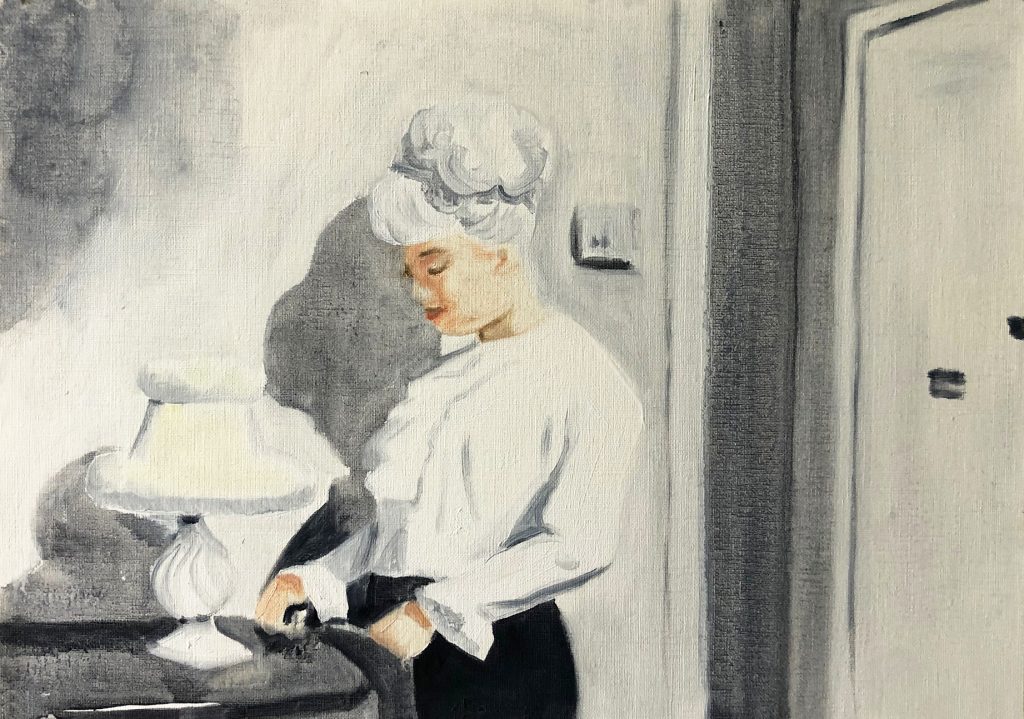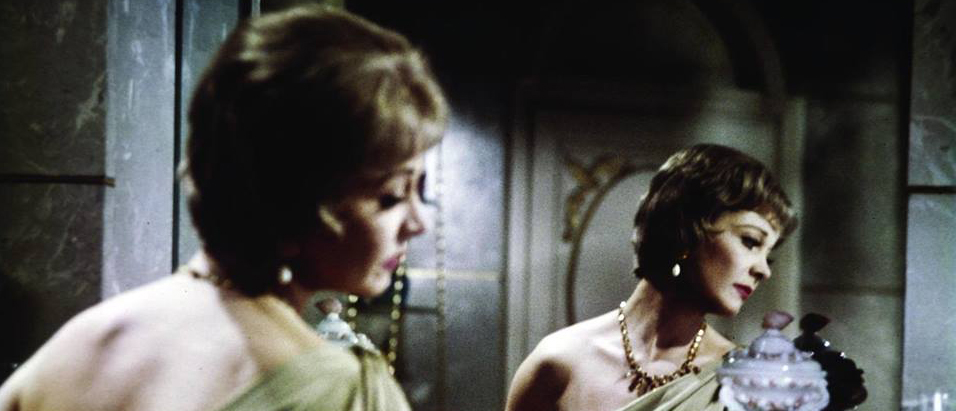In the first of Living British Cinema’s new film writing commissions Pamela Hutchinson teases out the avian connections in the 1963 film ‘Sparrows Can’t Sing’. Set in the East End of London amongst the old boozers and the new high rises, ‘Sparrers’ stars local girl Barbara Windsor in an early screen role. Accompanying paintings by Cathy Lomax.

Joan Littlewood’s 1963 film adaptation of her Theatre Workshop production Sparrers Can’t Sing keeps its Cockney accent undiluted everywhere except for the title. It was the first English-language film to be released in the US with subtitles, and still the New York Times fulminated: ‘The gabble of cockney spoken here is as incomprehensible as the reasoning of those who speak it.’1 The movie also exploits East End locations from Stepney to Stratford, including the Kray twins’ Kentucky club (with references to places including Cable Street, Barking Creek and the Woolwich Ferry) and features actors who were born within the sound of Bow Bells. It even had its premiere at the ABC cinema on Mile End Road, but still adopts RP above the credits, enunciating itself as the ‘proper’ Sparrows Can’t Sing instead.
Shoreditch-born Barbara Windsor, who plays wandering wife Maggie Gooding in a tight skirt, high heels and frilly white lace blouse with a cloud of blonde hair, embodies both ‘sparrer’ and ‘sparrow’. She’s authentically cockney (‘sparrer’) by birth and unmistakably so as soon as she opens her mouth, but also undeniably bird-like (‘sparrow’) in her appearance and motion, taking tiny, tottering steps down the streets of the East End, buxom chest tilted slightly forward as she pushes a pram. We first see her singing the title song (a heartsick ballad by Lionel Bart), as she waters her windowsill garden, several storeys up in a high-rise. She might look like the heroine of a medieval romance, awaiting her lover in a rustic bower, but the effect is more like a chick nesting in a tree. Throughout the film, women will appear at their windows, calling out and craning their neck to talk to passersby and hopeful loiterers: what Tom Milne’s review in Sight & Sound called ‘fluttering in female dovecots’.2

Sparrows Can’t Sing prioritises the evocation of place and character over its simple narrative. Sailor Charlie Gooding (James Booth) returns from a tour at sea in search of his wife Maggie. Unknown to him, she is now sharing a flat with his son, her new common-law husband, bus-driver Bert (George Sewell), and a baby of uncertain paternity. While friends and family fear the repercussions when Charlie learns the news (‘There’s gonna be murders’), the lovers’ reunion will eventually be scrappy but happy. Frequent references to Charlie’s domestic violence remain in the screenplay (‘If I hadn’t have liked you, I wouldn’t have bashed your head in, would I?’), which softens the original setup. In the play Charlie is returning not from sea but from a prison sentence handed out for his violence towards Maggie.
Avian imagery abounds in all corners: from Uncle Jack’s caged pigeons, the twittering of birdsong on the soundtrack and the word bird used for woman, to the illustrations on the screen in the pub where Maggie and Charlie bob and peck at each other during their first meeting. Charlie blows air through the lace on Maggie’s blouse, causing the fabric to ruffle like feathers. Likewise, Brendan Gill in the New Yorker referred to the film’s ‘ruffled surface’ to describe its pace and fast editing.3 Baby Christabel sits straight up in her pram like a chick in a nest waiting to be fed, and feathers fly everywhere: both real (in the feather bed Charlie humps upstairs, the headdress of the pub stripper) to metaphorical (the violent standoff at the pub, continued outside by Maggie and Charlie). Two rivals (Charlie and Bert) line very different nests to coax Maggie home, but Charlie wins her heart as he seduces her in ‘the woods’ of the local park.
According to the lyrics of Bart’s song, ‘sparrers’ cannot sing: ‘all they can do is fly in the sky’. And the cockney sparrows of Littlewood’s film are caught mid-flight, migrating from one home to another. Across the UK in the 1960s, inner-city slum housing was demolished, and residents rehoused into high-rise blocks known as ‘homes in the sky’. The difference between Maggie’s lofty new home, and her peers’ street-level dwellings is central to the film. As Amy Sargeant has written, ‘Buildings are here not simply the subject of social debate but are also shown to shape and participate in the life of a particular community.’4 Maggie’s flat is a freshly feathered cuckoo’s nest, replete with modern appliances and ornaments, including a frou-frou lampshade that seems to mimic her soft and fluffy appearance.

When Charlie comes looking for Maggie he is flummoxed by the sight of waste ground where his marital house once stood and shouts ‘Where’s all the houses? This used to be my street.’ The high-rise is far from a satisfactory replacement for a home, just as Bert is no substitute for Charlie. A neighbour identifies it as a trap rather than a haven – ‘They put all the old ones at the top, you know, to kill ’em off’ – and the structure is presented as absurd, what Andrew Sarris calls ‘super-Tati’ in his review for the Village Voice.5 Visitors are forbidden to ride bikes or lean against walls, or residents to leave prams in the hall. The superintendent bandies around unfamiliar words such as ‘hieroglyphics’ and ‘portico’ and the internal layout is perplexingly difficult to navigate. It is a space bound by rules and silence, rather than the chaotic noisiness of the old houses and the market, in which people live closer together, moving in and out of each other’s homes and carrying on conversations with people on the street outside – in broad cockney, of course.
Barbara Windsor has never lost or modified her accent. As Maggie, she typified an updated cockney type, a sparrow migrating between the old world and the new: goodhearted and romantic, glamorous and surprisingly tough. It’s a character she returned to in later life in her famous role as Peggy Mitchell in EastEnders, reigning over the Queen Victoria pub for two decades. The roles are sisters under the skin, birds of a feather, the most potent embodiments of the East End spirit since Eliza Doolittle and the Artful Dodger.
Pamela Hutchinson
2020
1 Bosley Crowther, ‘Sparrows Can’t Sing review’, New York Times, 7 May 1963, retrieved online
2 Tom Milne, ‘Sparrows Can’t Sing’, Sight and Sound, v32 n2 Spring 1963, p92
3 Brendan Gill, ‘Alive’, The New Yorker, 18 May 1963, p169
4 Amy Sargeant, ‘Sparrows Can’t Sing: East End kith and kinship in the 1960s’, Journal of British Cinema and Television, vol. 6 no. 2, p265
5 Andrew Sarris, ‘Films’, The Village Voice, 11 July 1963, p13
This article also appears in Garageland 23: Living British Cinema.
